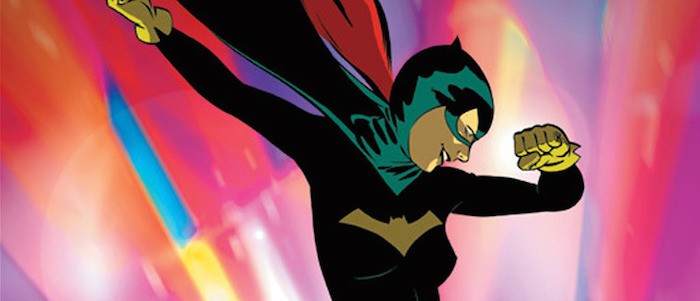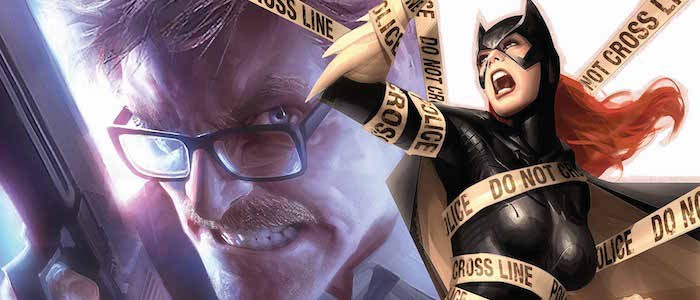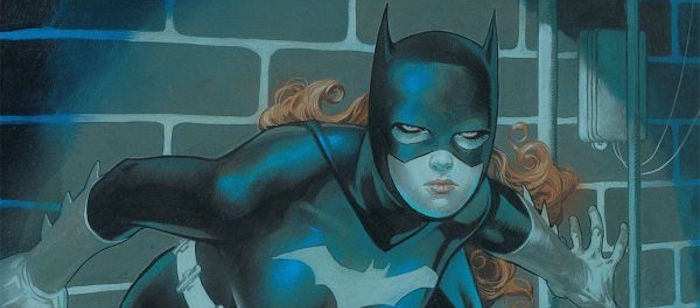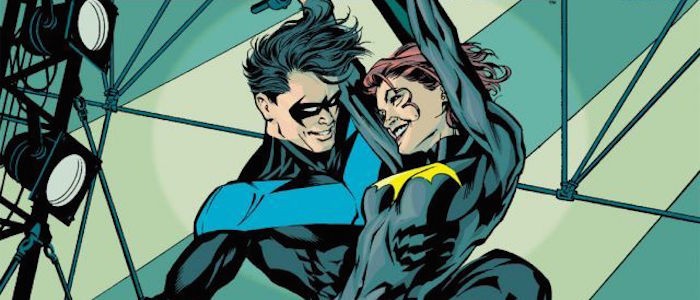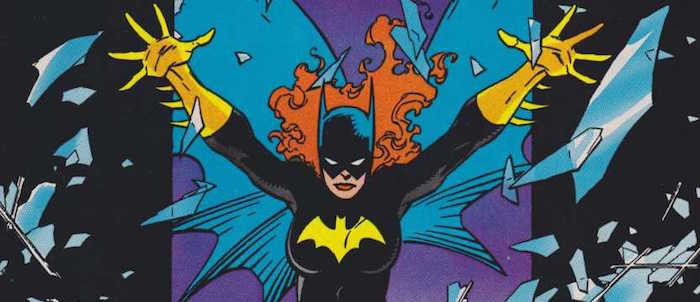Five 'Batgirl' Comic Book Stories That Should Influence The Movie
It's not exactly a done deal just yet, but news that Joss Whedon is in talks to write, direct and produce a solo Batgirl film definitely took everyone by surprise late last week. Of course, Whedon is no stranger to superhero films, having already directed both The Avengers and Avengers: Age of Ultron in the Marvel Cinematic Universe, but this film would see Whedon crossing over to the other side of the comics aisle and would mark his first film in the DCEU. Beyond this, Whedon made his name helming the Buffy the Vampire Slayer TV series, which just celebrated its twentieth anniversary, as well as the female-led series Dollhouse and the hugely popular and criminally short-lived Firefly. While many, including myself, paused at the idea of a man writing and directing such an important female character in the DC universe, Whedon does have a track record of success when it comes to portraying complex and strong female characters, which makes the news promising for fans.
But what comic book storylines could and should serve as influences on the new film's story? That's why I'm here today.
Setting the Stage
Since the character debuted in 1961, a number of women have donned the Batgirl cowl including Betty Kane (the very first Batgirl and niece of Batwoman Kathy Kane), Cassandra Cain and Stephanie Brown. But perhaps the most famous Batgirl is Barbara Gordon, the daughter (or sometimes niece) of Batman ally Commission Jim Gordon, most famously portrayed on-screen by Yvonne Craig in the third season of the Batman television series. Craig's Batgirl was hugely influential on young girls at the time who were finally able to see a version of themselves fighting alongside male superheroes. Decades later, I discovered Batgirl while the show was in syndication and the effect was not lost on me either. Here was a woman doing the very things I was told only boys could do, while maintaining a fierce sense of loyalty, empathy and justice. Barbara Gordon was one of my first role models and there isn't a Halloween that goes by where I don't linger on a link for that sparkly purple and yellow costume that I have dreamt about donning since childhood.
Recent reports claim that the film will be based on the introduction of Barbara Gordon as Batgirl, which took place in the 1967 comic "The Million Dollar Debut of Batgirl!", and would also use the Gail Simone's run during DC's The New 52 as an inspiration. But in the spirit of this exciting news, we thought it might be interesting to explore some of the best storylines from Babs' long history in the comics and propose some ideas for this solo Batgirl film and beyond.
Batgirl: Year One (2003)
Writers: Scott Beatty and Chuck DixonArt: Marcos Martin and Alvaro Lopez
When it comes to exploring the origins of Barbara Gordon's transformation into Batgirl, this 2003 mini-series – which is an updated take on the origin offered in "The Million Dollar Debut of Batgirl!" – seems like one of the best starting points. What makes Year One so interesting is how Babs uses her experiences with sexism as her motivation to make a difference by blazing her own trail. Despite being extremely intelligent, finishing college while she is still in her teens, Barbara finds her hope to pursue a career in law enforcement shut down at every avenue. Her father's overprotectiveness forbids her from joining Gotham PD and she is also dismissed by the FBI as too young and petite to be an agent. She then turns to the Justice League to try and join as an apprentice and is similarly turned down.
Although she initially creates the Batgirl costume for a masquerade ball as a dig at her father's unconventional relationship with Batman, Barbara springs into action when Killer Moth attempts to kidnap Bruce Wayne, allowing him to escape and (unknown to her) change into his Batman costume and call Robin to his aid. Barbara stands her ground against Batman, challenging his declaration that she didn't ask for permission to use his symbol by telling him he never asked for permission to become Batman. Throughout the mini-series, Barbara never backs down from the challenges thrown her way, deftly passing two of Batman's tests (obstacle courses and simulations of some of his enemies) and refusing to change her mind about her drive to keep Gotham safe despite the danger.
The Barbara we encounter in Year One is brave, loyal (Batman reveals his identity to her), intelligent and driven. She spurns the uninvited advances of Robin, showing us that her motivation in joining the Bat Family isn't one rooted in idealistic romance. Instead, Barbara successfully blazes her own path despite being given a multitude of excuses as to why her sex is a setback. While the actual plot is muddied a bit by doppleganger villains, the core of this comic would be a solid start to a Batgirl film franchise and an excellent introduction for the character into the DCEU.
Batgirl Vol. 4: Wanted (2014)
Writer: Gail SimoneArt: Fernando Pasarin and Jonathan Glapion
One of The New 52's best Batgirl storylines comes courtesy of Gail Simone, who does a great job of establishing Barbara outside of the Batgirl persona. In the issues collected in Wanted, you see civilian Barbara a lot, which helps establish her personality and her sense of humor but you also see how incredibly smart and confident she is and how one day this could translate into her Oracle persona (though preferably not at the hands of The Joker). While this isn't an origin story, there's so much insight into Barbara that this could potentially work as a first film, perhaps with an establishing flashback early on.
Wanted centers on a conflict between Batgirl and Commissioner Gordon akin to The Fugitive, as Commissioner Gordon believes Batgirl to be responsible for the death of his son, James, not knowing that Batgirl is his own daughter. Wanted also deals with the wear and tear of crime fighting as Barbara, who is nursing an injury, finds herself withdrawing from her civilian life as a result. While shopping with her roommate, Alysia Yeoh, Barbara becomes enraged by a pair of men who are catcalling the two women and loses control, confronting the men with shards of broken glass, which reminds her of the Batarang that was implicit in her brother's death. Eventually, although she is estranged from her father, Barbara must come to his rescue when Commissioner Gordon is kidnapped by the villain Knightfall.
Similar to Batman's own self-examinations in The Dark Knight, Wanted digs into the guilt that comes with the pursuit of justice. There's Barbara's guilt over her brother's death and the collateral damage that comes with crime fighting, but there's also the examination of human error when Commissioner Gordon shoots Ricky, a young man Barbara has been seeing. What also makes Wanted, or truthfully any of Simone's Batgirl run, so appealing is her inclusion of Yeoh, who was the first major transgender character introduced in the comics. Seeing the character on screen would be great chance to introduce more diversity into the DCEU (Yeoh is also of Singaporean descent). Yeoh is a character Simone herself has said she would love Whedon to include in the film and re-tooling Wanted to include some origin explanation could make for a taught and exciting thriller.
Legends of the DC Universe #10-11 “Folie a Deux” (1998)
Writer: Kelley PuckettArt: Terry Dodson and Kevin Nowlan
This two-part Batgirl arc in Legends of the DC Universe also offers an origin story that also centers on Barbara's complicated relationship with her (this time adopted) father, who has discovered her secret identity. Beyond their relationship, "Folie a Deux" also dives into the relationship between Batgirl and Batman, who reluctantly offers Barbara the skills she needs to succeed as he recognizes that he will not be able to persuade her to give up crime fighting otherwise. But Barbara's training with Batman leaves little time for her college courses and while she is intelligent enough to not fall behind, her absences begin to worry her father, who fears she is getting into trouble before he discovers the truth.
The two decide to meet at a bank, which, of course, winds up being held up. Both Commissioner Gordon and Barbara spring into action, trying to save each other and the day, but they wind up being taken down and tied up by the robbers. Without betraying the knowledge of Barbara's identity, Commissioner Gordon unties her and allows her to utilize her training to take down the robbers and take her father to the hospital. It's a sweet exploration of the relationship between the law-abiding father and vigilante daughter and also showcases Barbara's ability to connect with the people she is saving, something Batman often struggles with. "Folie a Deux" is another great example of the strong characteristics that have made Barbara a fan-favorite for so many years, her empathy, intelligence and most of all her caring spirit are on full display here.
Birds of Prey Vol. 1 #8 “On Wings” (1999)
Writer: Chuck DixonArt: Greg Land and Drew Geraci
What better place to introduce the Birds of Prey than in a Batgirl movie? Granted, this Barbara is Oracle but her relationship with Nightwing is pretty legendary and this comic that explores their complicated relationship is a fan-favorite.
When Black Canary hears a man's voice calling into Oracle, something that's never happened before, her interest is piqued. From here, we're given a look at Dick and Babs' first date, which they explicitly declared a non-date. After dinner in Blüdhaven, the two visit Haly's Circus, where the Flying Graysons were once the star attraction. Barbara asks Dick if it hurts to visit the circus after the death of his parents but he explains that he has found peace and keeps it open as a tribute to them. Barbara opens up about the idea of closure and says that while the rest of the Bat Family carry guilt over her tragedy, she has moved on and has found fulfillment in her new life as Oracle. Following this, Dick takes Barbara up on the trapeze, allowing her to fly through the air one more time before they share a sweet kiss. But the relationship is complicated and while it's clear Barbara trusts Dick implicitly, she decides not to keep seeing him.
While this isn't enough to warrant an entire movie, "On Wings" would be a fantastic thread woven into a future film, especially if Barbara will eventually transition into her post-Batgirl life as Oracle.
Batgirl Special Vol. 1 “The Last Batgirl Story” (1988)
Writer: Barbara KeselArt: Barry Kitson and Bruce D. Patterson
Admittedly, this isn't an origin story but it's one of the best explorations of Babs as both a civilian and a crime fighter and would make an excellent film down the line as she contemplates both the responsibility and danger of being a caped crusader, as well as her future in a city filled with a growing number of saviors. It's an admirable swan song for the character that, technically speaking, leads up to the ugly events in The Killing Joke, but it is a story that could be explored without going down that path.
First, a bit of backstory. "The Last Batgirl Story" was born in part out of the outrage over weak female characters in comics during the 1980s. When editor Dick Giordano responded by stating that hiring more women wouldn't make a difference, Barbara Kesel penned a strong counter response that turned into a job offer to write Batgirl stories. It must also be noted that Batgirl was more of a recurring character at this time; she didn't have her own comic, she just popped up in specials and limited runs. What Kesel is able to accomplish in "The Last Batgirl Story" is impressive and makes you yearn for Babs to put her cowl back on – until your realize that Giordano only had Kesel write this so Barbara's attack in the upcoming The Killing Joke would resonate a little deeper.
All this aside, "The Last Batgirl Story" is interesting because it addresses the PTSD that inevitably comes with being a target for some of Gotham's most dangerous and deranged criminals. This isn't a broken Barbara regrouping in the wake of an unwarranted attack to needle Batman, this is the wear and tear that comes with doing the job she loves. In this arc, Barbara is haunted by Cormorant, a killer whom she faced off with four years earlier, faking her death by hanging off of the edge of a building as the killer opened fire on her. When Cormorant returns and presumably commits a murder in the Gotham Public Library where Barbara works, which also suggests he might know her secret identity, she begins to contemplate hanging up the cowl.
Alongside this internal struggle, a new criminal named Slash (the true perpetrator of the library murder) is on the loose, killing men who have histories of violence and abuse towards women, something Barbara discovered after utilizing her pre-Oracle hacking skills to dig into the lives of some of the victims. Barbara's strong sense of justice truly shines as she is placed in a final confrontation with both Cormorant and Slash, finally choosing to bring the criminal to the police rather than exact her own revenge against him. Slash's identity is never actually revealed (it remains a mystery to this day), but she's an absolutely fascinating counterpart to Barbara's Batgirl and it is a struggle that would be brilliant to see on the big screen.

